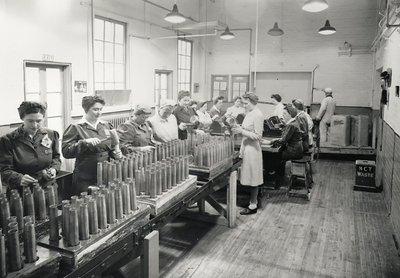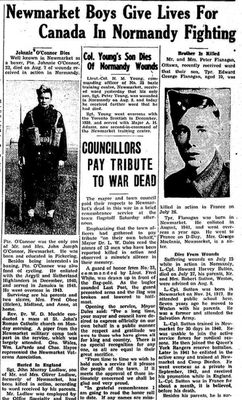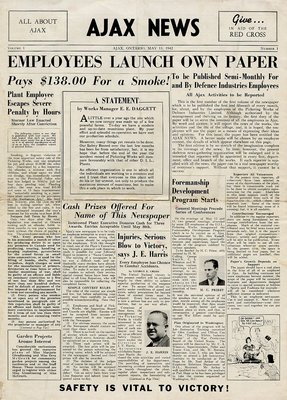
The Allied Expedition
The continuous social movement during the 1920s significantly increased Canadian society's awareness of issues such as female suffrage, veteran benefits and the labour union movement. What raised the awareness of the Canadian veterans were the peace-loving ideas and anti-war pacifism. With the general population aligning with anti-war ideology and feeling more sympathy for the veterans, Canada began taking a more cautious approach toward its participation in conflicts. By the time the Second World War broke out, Canada had also become relatively more independent from the United Kingdom, and in the early years of the war, we saw fewer Canadian expedition efforts into Europe. Canadian people became more and more dependent on media sources like broadcasts, newspapers and interviews as there were fewer combat veterans returning home to tell the tale.

The Ajax Bomb Girls
During the Second World War Canadian civilians and workforces also contributed significantly to the Allied war effort. Among thousands of workers and female workers, many people participated in the production of war materials from bullets to artillery shells. Throughout the course of the war, over two thousand female workers were employed and worked at a Defence Industries Limited (DIL) munitions plant near the town of Ajax, Ontario.
The munitions plant continued to operate even during the early 1950s, and by the end of the Second World War in 1945, it had produced more than 51 million heavy shells, as well as more than 234 million explosive devices. The amount and quality of the Ajax production played a significant part in the Allied forces' campaign in Europe as well as in the Pacific. While the men and women working in the factory did not see combat themselves, their contribution was highly regarded by the media and Ajax has become one of the symbols of Canada's military-industrial workers.

Instead of sending volunteers and mobilizing the entire nation and joining the European theatre right away, Canada participated in naval campaigns over the Atlantic alongside other Allied navies for years. After several years of preparation and increasing public attention, the new Canadian Expedition was sent to Europe and stormed the Normandy beachhead in 1944. The stories of combat veterans from the navy, airforce and army began pouring in alongside the media reports on the frontline situation. People were able to hear much more about those who fought overseas than during the First World War thanks to the increasing public awareness of the veterans.

By the end of 1941 the DIL has constructed a munitions plant in Ajax under the support of the Canadian government. While this was a freshly built industrial complex, many workers, most of them female, accepted the offer and moved to Ajax and began working in the factory to produce military-graded munitions and explosives. The arrival of thousands of new employees throughout the course of the Second World War, with the peak of more than 9000 female and male workers, led to the growth of the Ajax community. With the community centralized around the munitions plant, many workers eventually decided to settle there and became an iconic symbol of Canadian citizens' contribution to the war in Ontario.
